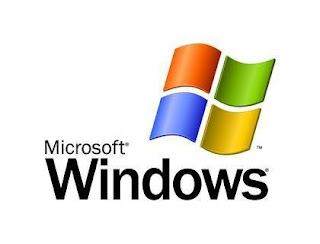Operating MS Windows and Windows Components

Microsoft WINDOWS
WHAT’S ON YOUR WINDOWS SCREEN
Depending on how you computer is set up, various item appear on your desktop when start Windows. Here are four important ones.
MY COMPUTER:
Double-click this icon to see your computer’s contents and manage your files.
NETWORK NEIGHBORHOOD
Double click this icon to see available resources on the network, if you computer is or can be connected to one.
RECYCLE BIN
The Recycle Bin is a temporary storage place for deleted files. Yu can use it to retrieve files deleted in error.
PROGRAMME MANAGER
You can find your old program groups by clicking the Start button and then pointing to Programs. You groups appear as folders on the Programs menu.
FILE MANAGER
To manage your files, you click the Start button, point to Programs, and then click Windows Explorer. Your directories appear as folders.
MS-DOS PROMPT
To open an MS-DOS window, you click the Start button, point to Programs and then click MS-DOS Prompt.
CONTROL PANEL
To open Control Panel, you click the Start button, point to Settings, and then click Control Panel.
PRINT MANAGER
To set up a printer or look at information about documents you’re printing, you click the Start button, point to Settings, and then click Printers.
RUN COMMAND
To use the Run command, you click the Start button, and then click Run. You can run MS-DOS-based and Windows-based programs, open folders, and connect to network resources by using Run.
TASK SWITCHING
You can use the taskbar to switch between open windows. Just click the button on it that represents the window you want to switch to. You can also use ALT+TAB, just as you did in earlier versions of Windows.
CLOSE BUTTON:
To close a window, you click the Close button in the upper-right corner of the window, next to the Minimize and Maximize buttons.
WHAT’S NEW IN WINDOWS?
Windows offers many new, exciting features, in addition to improvements to many features you may be familiar with from earlier versions of Windows. This section mentions just a few of these features.
For a complete listing, look up “what’s new” in the Help Index.
NEW IMPROVED INTERFACE: Windows now features the Start button and taskbar. Click the Start button to quickly open the program, find documents and use system tools. Use the taskbar to switch between programs as easily as changing channels on your TV.
WINDOWS EXPLORER: Windows Explorer is a powerful way to browse through and manage your files, drives, and network connections.
LONG FILENAMES: Windows now supports long filenames to make your files easier to organize and find.
IMPROVED GAME & MULTIMEDIA SUPPORT: You will enjoy the faster will enjoy the faster video capability for games, enhanced support for MS-DOS-based games, and improved performance for playing video and sound files.
PLUG AND PLAY HARDWARE COMPATIBILITY: You can just insert the card for your Plug and Play hardware in your computer. When you turn on your computer, Windows recognizes and sets up your hardware for you automatically.
32-BIT PREEMPTIVE MULTITASKING: Windows now let’s you use many programs at once: do more in less time!
MICROSOFT EXCHANGE: Use Microsoft Exchange to view and work with all types of electronic communications, including e-mail and faxes.
THE MICROSOFT NETWORK: You can use this new, affordable, and easy-to-use online service to communicate with people worldwide, using e-mail, bulletin boards, and the Internet.
BACKING UP YOUR OLD FILES
Most Windows setups are easy and trouble-free, however, any time you update your computer’s operating system. It is possible that an error could occur (such as system failure due to incompatible hardware, or a power failure) that may temporarily or permanently prevents access to data.
Before you set up Windows 95, you might want to back up certain system files. The files you should back up include the following:
All initialization (ini) files in your Windows directory.
All registry data (dat) files in your Windows directory.
All password (pwl) files in your Windows directory.
All files specified in the Config.sys and Autoexec.bat files.
Your config.sys and Autoexec.bat files, located in the root directory of your startup drive (usually drive C)
Proprietary network configuration files and long scripts.
You may also want to back up personal or business data that is on the hard disk.
Just before setting up Windows 95, make sure your network software, if any, is working. The settings from the existing network configuration are used in Windows 95.
WHAT’S NEW IN WINDOWS?
Windows offers many new, exciting features, in addition to improvements to many features you may be familiar with from earlier versions of Windows. This section mentions just a few of these features.
For a complete listing, look up “what’s new” in the Help Index.
NEW IMPROVED INTERFACE: Windows now features the Start button and taskbar. Click the Start button to quickly open programs, find documents, and use system tools. Use the taskbar to switch between programs as easily as changing channels on your TV.
WINDOWS EXPLORER: Windows Explorer is a powerful way to browse through and manage your files, drives and network connections.
LONG FILESNAME: Windows now supports long filenames to make your files easier to organize and find.
IMPROVED GAME AND MULTIMEDIA SUPPORT: You will enjoy the faster video capability for games, enhanced support for MS-DOS-based games, and improved performance for playing video and sound files.
PLUG AND PLAY HARDWARE COMPATIBILITY: You can just insert the card for your Plug and Play hardware in your computer. When you turn on your computer, Windows recognizes and sets up your hardware for you automatically.
32-BIT PREEMPTIVE MULTITASKING: Windows now let’s you use many programs at once: do more in less time
MICROSOFT EXCHANGE: Use Microsoft Exchange to view and work with all types of electronic communications, including e-mail and faxes.
THE MICROSOFT NETWORK: You can use this new, affordable, and easy-to-use online service to communicate with people worldwide, using e-mail, bulletin boards, and the Internet.
